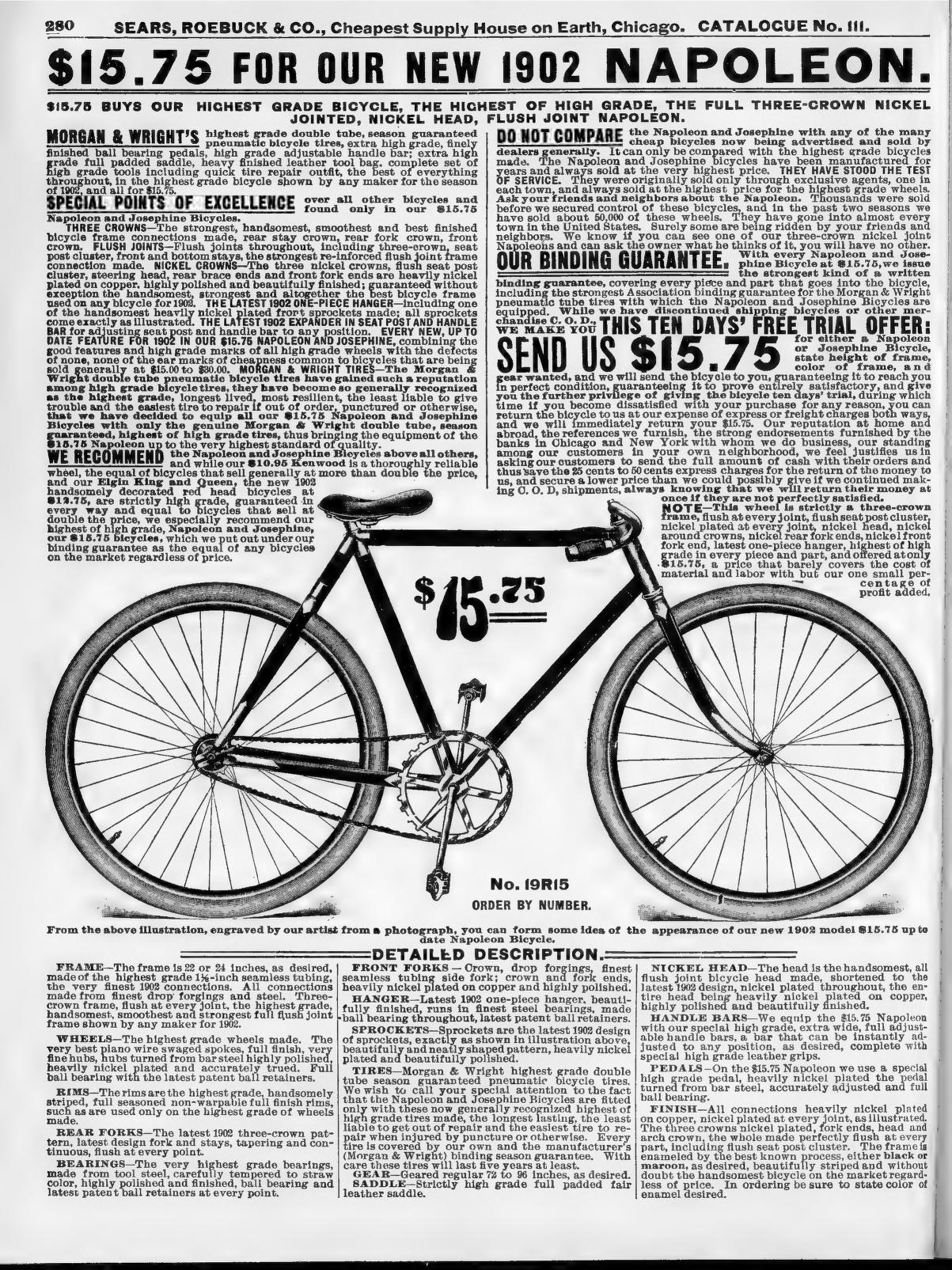I'm not sure I can link like that to archived images from a catalog. Page 279 is missing from the scan. This is the whole catalog: https://archive.org/details/sears-roebuck-catalogue-111/page/n136/mode/1up?view=theater The bicycle section starts on page 137 of the slider.
For reference:
At this early point in the history of license plates in the United States of America, none of the 45 states, territories, or the District of Columbia, was issuing its own plates.[1][2][3][4] The State of New York remained the only state that required vehicle owners to register their automobiles. The system of using the owner's initials as the registration number, begun in 1901, remained in effect. This would change in 1903 when a number was assigned to each owner to display on their vehicle. Across the country the increases in the number of automobiles was being noticed, and there were many cities, like Chicago, that had already begun to require their owners to register their vehicles.[5][6]
https://en.wikipedia.org/wiki/Vehicle_registration_plates_of_the_United_States_for_1902
1902
- February 12 – The 1st Conference of the International Woman Suffrage Alliance takes place in Washington, D.C..
- March 7 – Second Boer War: Battle of Tweebosch – South African Boers win their last battle over the British Army, with the capture of a British general and 200 of his men.
- March 10 – Clashes between police and Georgian workers led by Joseph Stalin leave 15 dead, 54 wounded, and 500 in prison.[1]
- April 2 – The Electric Theatre, the first movie theater in the United States, opens in Los Angeles.
- May 20 – Cuba gains independence from the United States.
- July 2 – Philippine–American War ends.
- August 22 – Theodore Roosevelt becomes the first American President to ride in an automobile, a Columbia Electric Victoria through Hartford, Connecticut.
- August 22 – A 7.7 earthquake shakes the border between China and Kyrgyzstan killing 10,000 people.
- September 1 – The first science fiction film, the silent A Trip to the Moon (Le Voyage dans La Lune), is premièred at the Théâtre Robert-Houdin in Paris, France, by actor/producer Georges Méliès, and proves an immediate success.[7]
- November 16 – A newspaper cartoon depicting U.S. President "Teddy" Roosevelt refusing to shoot a bear cub inspires creation of the first teddy bear by Morris Michtom in New York City.
- December 30 – Discovery Expedition: British explorers Scott, Shackleton and Wilson reach the furthest southern point reached thus far by man, south of 82°S.

